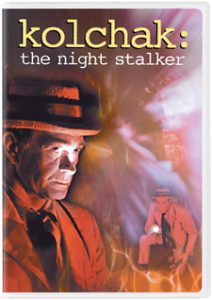A few years after “Buffy” went off the air, fans got the exciting news that the story would continue in comics, with Joss Whedon overseeing the project. Dark Horse even labels Whedon the “executive producer,” to provide a sense that this is another season of “Buffy,” in a different medium. Most comics prior to this became non-canon (with some exceptions, such as “Fray”), but while all Dark Horse comics from this point forward are canon (the situation with IDW’s “Angel” and “Spike” is more confusing), are they any good? Let’s begin our revisiting of the post-TV era of “Buffy,” which would eventually expand all the way to Season 12:
“The Long Way Home” (Issues 1-4, March-June 2007)
When he branched into comic writing, Whedon strongly believed that the medium’s strengths should be embraced, even when adapting relatively low-budget TV shows. He revamped “Angel” with the more superhero-y “Long Night’s Journey,” and although that marked the demise (at the time) of the “Angel” title, he doesn’t alter his philosophy for “Buffy” Season 8.
Buffy and other Slayers jump from a helicopter in a memorable opening image. The story’s events cover the whole globe. Warren is alive and well despite being skinless. And as a perfect metaphor for Season 8’s bigness, Dawn is literally giant-sized; she uses a pond to take a bath and the top floor of a castle is at her eye level.
Whedon effectively sets the foundation. Familiar rhythms carry us through the pages as we absorb facts: There are 1,800 Slayers (500 of whom have signed on with Buffy) split into cells all over the world, Xander and Andrew are Watchers, and Willow has been gone for a year — so we know the events of “Angel” Season 5 have already happened.
With that many Slayers, demons and vampires are no match. But in a biting enhancement of Season 4’s theme, the U.S. military treats the Slayer Organization as the enemy. General Voll sums up his pre-crime view to Buffy: “If you win (against the demons and vampires), then you’ll decide the world still isn’t the way you want it, and the demon in you will say just one thing. ‘Slay.’ ” And so, by their very existence, the Slayer Organization is “at war with the human race,” Voll says.
While the military-industrial-complex commentary is valid, it’s depressingly based in the real world. But Whedon lightens it up by having Voll be a member of Twilight (as his tattoo indicates), the bigger and more mysterious Big Bad of Season 8. So hopefully it’s not the entire military that sees Buffy’s forces as the enemy.
Among smaller mysteries is “Who kissed Buffy to wake her from her magic coma?” (This curse is placed upon Buffy by Amy. Upon publication, I was like: “Yay! Amy!” But she is a rather basic wicked witch here.) The kissage mystery is answered if you follow the cinnamon-lip-gloss hint. The fact of a Slayer, Satsu, being in love with Buffy would lead to some hand-wringing in fan circles – but that’s for later. Also, hints of a Xander-Dawn romance are dropped here: He is a good listener while she laments being a giant – something that came about because she allegedly had (off-panel) sex with a Thricewise named Kenny, who curses her. It’s something you’d think Buffy would be more sympathetic about, but understandably, she’s busy.

The scope of “The Long Way Home” is grand, which is partially exciting, but it also makes me miss the comfy home base of Sunnydale; Buffy’s branch of the Slayer army is based at a castle in Scotland. (Granted, they literally can’t go home again, as Sunnydale has been destroyed.) I mostly like where the Scooby Gang is at in their lives, although I resent Willow for running off without telling anyone why or where; her magic powers have made her kind of arrogant. And I also resist magic- and mysticism-based stories, which is going to be a problem for me as these comics go forward.
Andrew’s long speech to his charges about Lando Calrissian is a clunker (I was growing tired of pop-culture references by 2007, and definitely am now), but that’s how he was in the TV series, too. Still the “Look how nerdy Andrew and Xander are” scenes don’t age well, as girl nerds have become common and geek culture has become mainstream for all demographics.
The Scooby Gang members are all wonderfully drawn by Georges Jeanty, who nails the likenesses but also gives everyone a comic-booky cuteness. He effortlessly blends new Slayers into the group — the red-headed Leah; the Asian Satsu; and Renee, who is crushing on Xander. Veteran “Buffy” inker Andy Owens and colorist Michelle Madsen complete a look that I love and associate with the canonical comics.
3.5 stars

“The Chain” (Issue 5, July 2007)
“The Long Way Home” establishes that Buffy is more famous than ever among the evil set. She can’t disappear into an army of Slayers, because the ultimate goal for self-respecting demons has gone from bagging the Slayer to bagging the leader of the Slayers – which, if you think about it, adds supreme irony to Buffy’s Season 7 goal of sharing the power. In order to keep evil forces off balance, the Slayer Organization dispatches two fake Buffys into the field; one is the girl in question from “The Girl in Question” (“Angel” 5.20).
The other is the Slayer in “The Chain,” written by Whedon with Paul Lee on art duties. The military mission here is less important than her characterization: Although she is unnamed, and her purpose is to be a decoy, this Slayer finds her own self-worth before being killed.
“The Chain” is a triumph of world-building: It’s a whole issue without any familiar faces (Jo Chen’s cover art of Buffy pulling off her face “Mission: Impossible”-style is as close as we get), but I think Issue 5 will resonate going forward. As we see huge swaths of Slayers fighting bad guys, we’ll remember they are all individuals thanks to this story.
4 stars

“No Future for You” (Issues 6-9, September-December 2007)
I recalled Brian K. Vaughan being more rooted in the Whedon writing tree than he is; “No Future for You” is his only Buffyverse work. He would go on to write several episodes of “Daredevil” Season 1, the staff of which is loaded with Buffyverse veterans.
Still, he makes up for his lack of “Buffy” quantity with quality, as this is an elite Faith story that has old-school rhythms: The banter is zippy, but not overly specific with its pop-culture references (Buffy to evil English Slayer Genevieve: “For the people who invented girl power, your sense of sorority sucks.”). And Vaughan’s sense of amusing timing is on point: Faith says “I wish you’d just go away,” and Buffy does, as Willow’s transporting spell works at that very moment.
And he undercuts clichés:
Willow: “Not killing humans is what separates us from the bad guys.”
Buffy: “No. Not being bad is what separates us from the bad guys.”
“No Future for You” answers a lingering question: What about those 1,300 or so Slayers who didn’t join the Slayer Organization? At least one of them turns out to be evil, or at least manipulated by Twilight into taking a crack at Buffy’s “throne.” But Genevieve isn’t a cliché, and it makes perfect sense when Faith hits it off with her rather than assassinating her, as Giles had assigned her to do.
I am somewhat surprised that Giles gives Faith this assignment, but it makes sense, because they are a lot alike. Giles has taken up the burden of killing humans when necessary (see Ben in “The Gift,” 5.22), and he sees that Faith’s path resembles his own at that age. Interestingly, Giles ends up killing Roden (Genevieve’s handler) here, sparing Faith from doing so.
The arc also at least acknowledges the elephant-in-the-room question of where the Slayer Organization gets its seemingly unlimited funds (Giles intends to set up Faith for life if she fulfills this mission!). It’s a mysterious benefactor with deep pockets, Buffy tells Willow. That’s unsatisfying, but at least it tells us that the Season 8 writing team is aware that this is an important logistical point, and they’ll likely focus on it eventually (in the next issue, it turns out).
5 stars

“Anywhere but Here” (Issue 10, January 2008)
While Whedon didn’t invite any pre-canon comic writers (other than those who started on the TV staff) to play in Season 8, he did invite back several artists, including Cliff Richards – the most prolific of the “BTVS Classic” era – on this one. The story is a mix of what I like and don’t like about Season 8. As Buffy and Willow enter a time-shifting tunnel where they get vague hints about the future — calling to mind “Restless” (4.22) – there are too many pop-culture references, like when they kill time by fantasizing about Daniel Craig and Christian Bale (in Buffy’s case) and Tina Fey (in Willow’s case).
But then Whedon delivers a great revelation about Willow that reminds me he’s the writer of this issue: Willow stayed away from Buffy for a year – and kept her distance from Kennedy too – because of lingering guilt about resurrecting Buffy in Season 6. Willow believes Tara is dead because she, Willow, put Buffy first – and dang if she isn’t right, at least in terms of linear logic. Willow doesn’t romantically love Buffy, but nonetheless, her romances can’t compete with her love of Buffy. It’s both tragic and really sweet.
Back in the real world of the castle, Whedon delivers a cliché and undercuts it: Kenny cursed Dawn because Dawn slept with his roommate, breaking his heart; Xander says Dawn is guilty … of being a cliché. But the cool thing here is that Dawn opens up to Xander about her embarrassing behavior, bringing them closer.
Oh, and the revelations keep coming: The Slayer Organization got its riches via Buffy and company robbing a secret Nazi vault of gold bars. While you couldn’t come up with a better scenario where theft is defensible, Willow notes that this could come back to bite Buffy. “Anywhere but Here” wisely posits that if you do bad things for the sake of good, that reasoning can crumble in a hurry.
3.5 stars
Click here for an index of all of John’s “Buffy” and “Angel” reviews.

